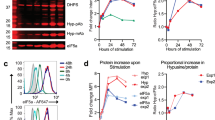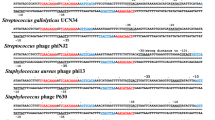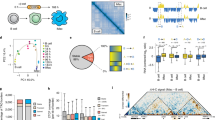Abstract
CONCANAVALIN A (Con A) stimulates nondividing lymphocytes (in G0) to transform and enter the division cycle1. Within 3 h a significant proportion of the cells become committed to transform and do so after the removal of Con A (ref. 2). When the translation of mRNA into protein is inhibited (by low concentrations of anisomycin) lymphocyte transformation is also blocked3. Anisomycin has proved particularly useful in studying lymphocyte transformation because its effect is reversible: in the presence of Con A it holds the cells in G0, apparently without adverse effects, and the cells transform following its removal3. Using anisomycin it has been shown that Con A induces the synthesis of factor(s) which commit lymphocytes to transform3. I have examined the stability and nature of the ‘transformation signal’, again exploiting the reversible effect of anisomycin, and report here that on binding to the surface of nondividing lymphocytes, Con A induces the transcription of a short-lived mRNA. This mRNA encodes a ‘transformation factor’ which, when translated, commits lymphocytes to enter the division cycle; extracellular Con A is no longer required.
This is a preview of subscription content, access via your institution
Access options
Subscribe to this journal
Receive 51 print issues and online access
$199.00 per year
only $3.90 per issue
Buy this article
- Purchase on Springer Link
- Instant access to full article PDF
Prices may be subject to local taxes which are calculated during checkout
Similar content being viewed by others
References
Powell, A. E. & Leon, M. A. Expl Cell Res. 62, 315–325 (1970).
Milner, S. M. Nature 268, 441–442 (1977).
Milner, J. Nature 272, 628–629 (1978).
Lindell, T. J., Weinberg, F., Morris, P. W., Roeder, R. G. & Rutter, W. J. Science 170, 447–449 (1970).
Jacob, S. T., Sajdel, E. M. & Munro, H. N. Nature 225, 60–62 (1970).
Neth, R., Munro, R. E., Heller, G., Battaner, E. & Vazquez, D. FEBS Lett. 6, 198–202 (1970).
Weinmann, R. & Roeder, R. G. Proc. natn. Acad. Sci. U.S.A. 71, 1790–1794 (1974).
Boctor, A. & Grossman, A. Biochem. Pharmac. 22, 17–28 (1973).
Milner, J. Biol. Rev. 51, 181–209 (1976).
Lindell, T. J., O'Malley, A. F. & Puglisi, B. Biochemistry 17, 1154–1160 (1978).
Author information
Authors and Affiliations
Rights and permissions
About this article
Cite this article
MILNER, J. An inducible gene involved in commitment of lymphocytes to transform. Nature 275, 660–661 (1978). https://doi.org/10.1038/275660a0
Received:
Accepted:
Issue Date:
DOI: https://doi.org/10.1038/275660a0
This article is cited by
Comments
By submitting a comment you agree to abide by our Terms and Community Guidelines. If you find something abusive or that does not comply with our terms or guidelines please flag it as inappropriate.



